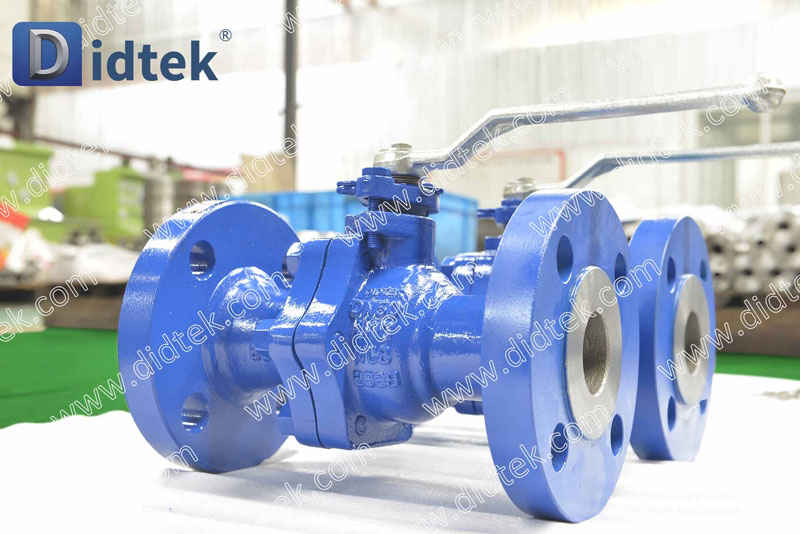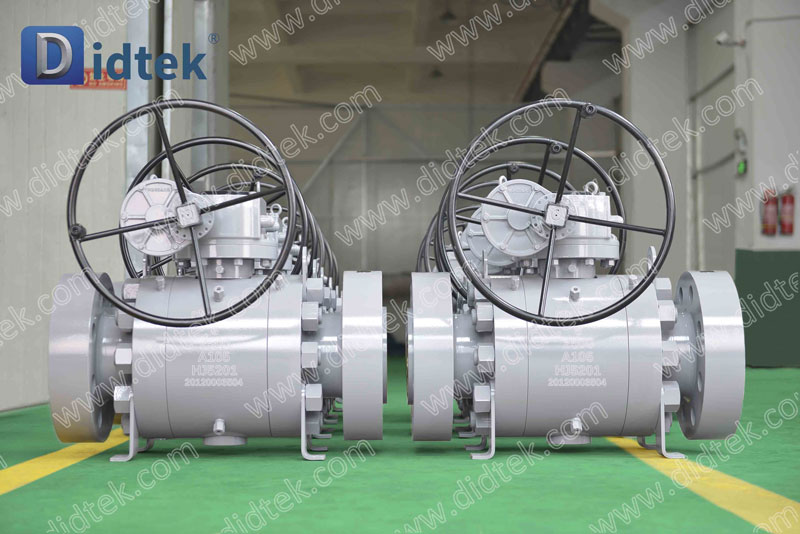Introduction
In the world of valves, ball valves are known for their compact, durable design and reliable, fast acting on/off control. Ball valves utilize a ball with a hole (known as a port) drilled through the center to control the flow of media. The ball is rotated 90 degrees to align the port with the valve body and allow media to flow through the valve. To close the valve, the ball is rotated 90 degrees back to the closed position. All ball valves rely on the use of two seats, usually made of polytetrafluoroethylene (PTFE), to hold the ball in place and create a tight seal to prevent media from leaking through the valve.
Floating and trunnion are two basic types of ball valve designs. Floating ball valves are the most common type of valve used in industrial piping systems. These valves are designed so that as the seats begin to wear the pressure from the media flowing through the valve will force the ball against the downstream seat to maintain a tight seal.
In trunnion ball valves, the ball is fixed in place by bearings that prohibit it from floating downstream. A spring-loaded seat mechanism ensures that the valve remains leak-tight as the seat inevitably begins to wear down.
In this post, we’ll cover the details of floating ball valve design and its applications, as well as the situations in which you might choose trunnion-mounted over floating.
Floating Ball Valve Design

Before we dive into the details of floating ball valve design, let’s define the key components of a ball valve:
Valve body – the chamber in which the valve mechanism is encased. Ball valves are commonly made of steel, iron, brass, bronze or PVC.
Ball – A pivoting sphere with a flow path through the center, connected to the valve body via a stem or shaft
Bore or port – hollow center of the ball
Packing – Flexible seals that fit around the valve stem to prevent media from escaping the valve body
Seat – A round, donut-shaped disc that forms a seal between the valve body and ball
Stem – The shaft that anchors the ball and connects it to the external operating lever or actuator
Actuator – An external device designed to rotate the stem of the valve. This can be a lever, a gear, a motor-operated gear (electric actuator) or a pneumatic/hydraulic actuator.
Most ball valves are of the floating variety. Floating ball valves are supported by cupped seats that create a tight seal between the valve body and the ball. The ball itself is suspended in the media it regulates and is kept in position by cup-like seats, usually made of a thermoplastic. These seats form a tight seal between the ball and the valve body.
Floating ball valves are capable of providing bi-directional sealing, meaning that the ball can move freely enough to halt media flowing in either direction. This type of valve is lightweight, economical and versatile, and is found in applications including oil, gas, water, steam and petrochemicals.
How Do Floating Ball Valves Work?
Floating ball valves are operated by a shaft, or stem, attached to the top of the ball that turns it 90 degrees (a quarter turn). As the ball rotates, the port is covered or uncovered by the wall of the valve body, either releasing or halting the flow of media. The stem is attached loosely enough to the ball that, as the ball rotates on its axis, the pressure of the flow pushes the ball against its downstream seat, creating a tight seal. For this reason, floating ball valves may not seal as effectively in very low pressure applications after a certain amount of seat wear has occurred. This is because there may not be enough media pressure to force the ball against the downstream seat to create a tight seal. However, in most applications downstream pressure is sufficient to maintain a tight seal long after the seats have begun to wear.
What Are Trunnion Ball Valves?

Trunnion-mounted ball valves work much the same as floating ball valves, but in this case the ball is anchored by a second stem opposite the operating stem. This second stem and bearing is called a trunnion.
Unlike in floating ball valve design, the stem of a trunnion ball valve is rigidly attached to the ball, which prevents the ball from moving anywhere except on its axis. Since the ball does not “float” downstream with the pressure of the media, trunnion ball valves can maintain a proper seal on both sides simultaneously. This is especially crucial for multi port valves and valves in very low-pressure applications in which the flow of media is not strong enough to push the ball against its downstream seat.
Trunnion valves are effective in both low and high pressure applications, and require less torque to turn than floating ball valves. However, piping system designers should note that trunnion ball designs are generally more expensive than floating ball designs.
Trunnion valves are common in the following industries:
· Chemical
· Electrical
· Oil and gas
· Pipeline
· Hydrocarbon
In both floating and trunnion ball valves, the seal between the valve stem and the external environment is subject to the most wear and tear over time, so valve packing is a critical component in preventing media from escaping the piping system through the valve. It’s also recommended that piping system designers choose a spring loaded packing design to compensate for inevitable wear and prevent stem seal leaks.





